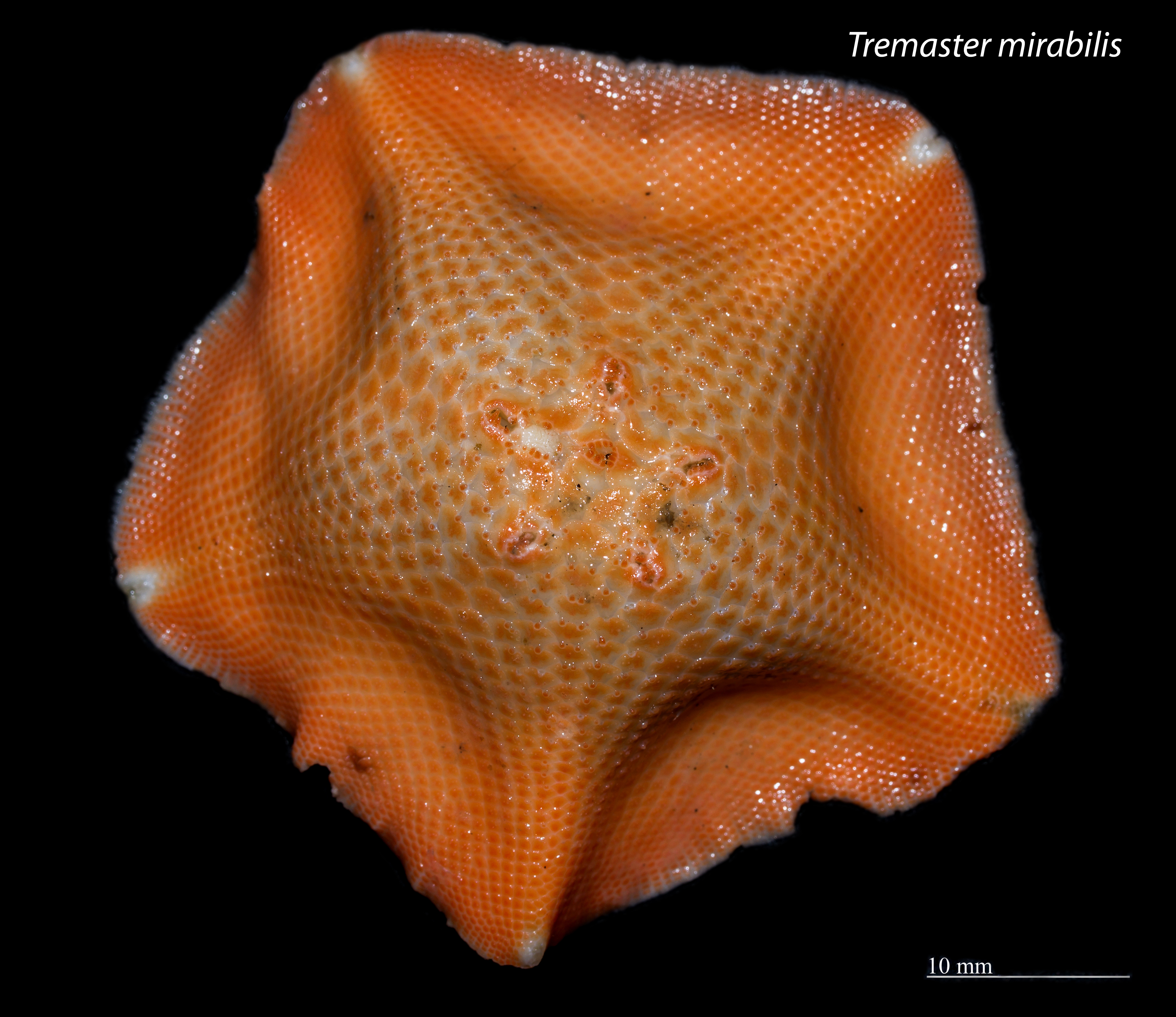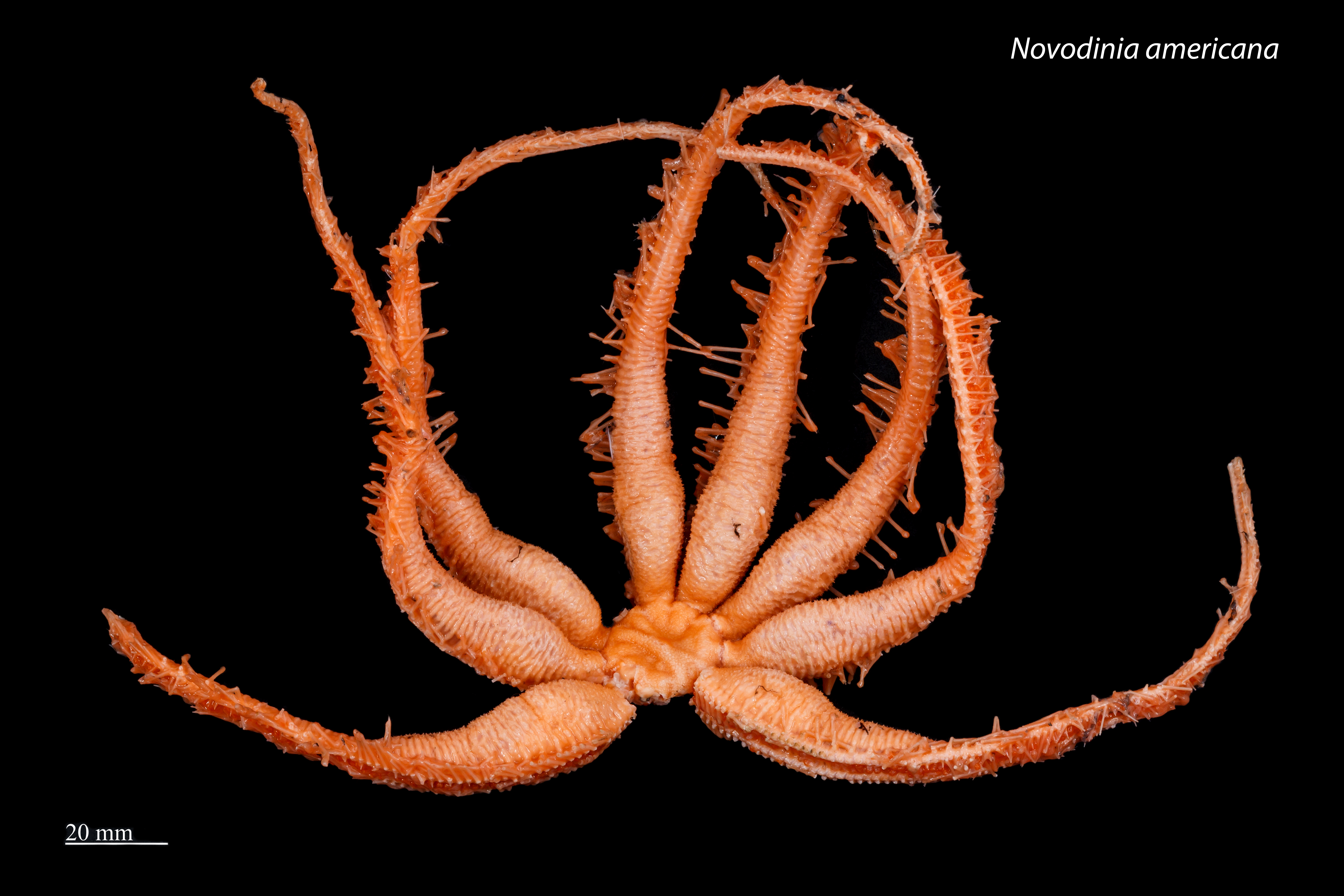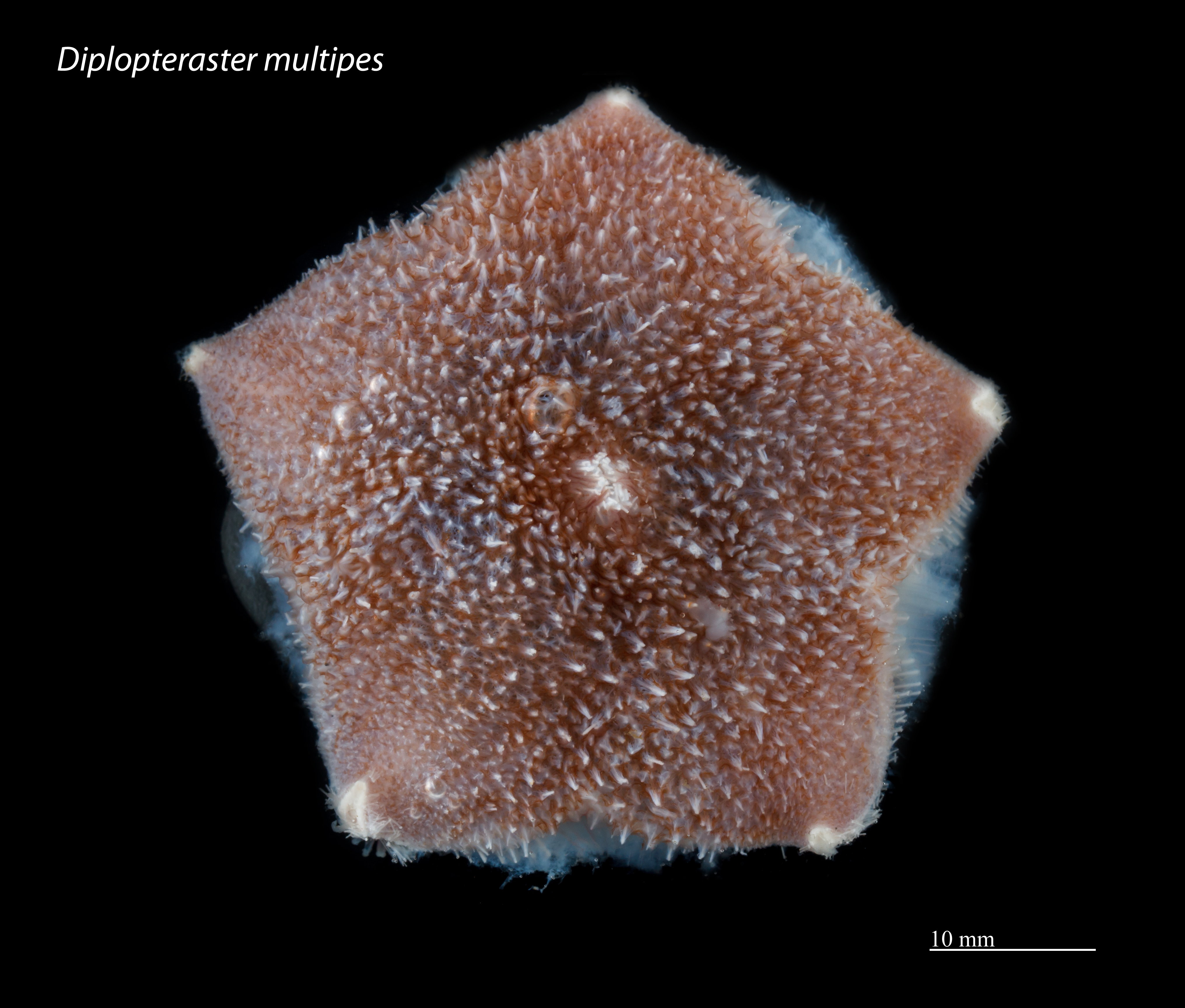Deep-sea Arctic starfish have eyes (and some other cool talents)
These starfish have eyes, but live far deeper than sunlight penetrates. Their discovery adds a wrinkle to the ongoing mystery of why starfish have eyes in the first place.

Don’t look now, but that starfish is checking you out.
Well, kinda. The fact that these creatures found in dark ocean waters have the capability to see in is one of the surprising findings in a recent study looking at deep-sea Arctic starfish off the coast of Greenland.
Led by Marie Helene Birk at the University of Copenhagen, the paper offers new insights to help understand these creatures found throughout the world, with close to 2,000 species spanning from Arctic waters to Antarctic fjords.
Scientists have known for decades that starfish found elsewhere in the world have compound eyes — think those found in flies or shrimp. Recent studies on starfish in lower latitudes have suggested that the eyes are sensitive to light and that they can help starfish find their way back to coral reefs they call home. But their purpose has remained incompletely understood — and the discovery of starfish with eyes in the unlit depths of the Arctic Ocean adds a fresh wrinkle to the mystery.
Anders Garm, an associate professor at the University of Copenhagen, was involved with both the 2014 coral reef study and the most recent Arctic paper, both published in the Proceedings of the Royal Society B. Knowing that shallow-water starfish were visually guided, Garm said the authors were then interested to see what happens to these animals as they descend into darker deep-sea waters.
“We are entirely driven by the fascination of knowing so little about the deep-sea ecosystems, and that is not only the case for the Arctic, and not limited to starfish,” Martin Blicher, co-author of the study and senior researcher at Greenland Institute of Natural Resources, wrote in an email.
Using three different large trawls, the researchers collected close to 2,000 starfish off the west, south and southeast coasts of Greenland during the summers of 2015 and 2016. The starfish were found in a range of ocean depths between 41 meters — where some sunlight is still visible — and 1,483 meters — where no sunlight is visible.
The scientists then focused on 13 species of starfish for their study, chosen for their diversity and abundance during the trawling collection. As soon as the starfish were taken aboard the ship, the researchers then transferred some into darkened tanks that replicated their deep-sea ocean environment, sans the pressure. All but one species of starfish (the Novodinia americana) could be kept alive shipboard.
There are some limitations to this type of sampling, though, as it could stress out the starfish or alter its behavior.
“It’s a classical science problem,” Garm said. “As soon as you start to interfere with whatever you’re studying, things change, especially things as complicated as behavior.”
Still, Christopher Mah, a researcher at the Smithsonian’s National Museum of Natural History and an expert on starfish diversity, said that this is one of the only ways to study the creatures without sending a submarine into their deep-sea habitats.
“I do think that they observed them as naturally as they could,” said Mah.
Some of the starfish behaviors are just now being studied and understood, especially as they relate to their visual capabilities. The authors found that all but one of the 13 species had eyes, and two were bioluminescent.

One species, the Novodinia americana, which has eight long, spidery legs, lit up when stimulated, and had big pupils that could see images with a sharp clarity.

The authors also documented some fascinating behavior exhibited by the pentagonal Diplopteraster multipes, which can push its stomach out of its mouth while slowly walking across the bottom of the tank. It also had highly developed eyes and the ability to produce short flashes of light.
So why would a starfish need well-developed eyes if it was living in habitats incapable of receiving any sunlight? The authors hypothesized that the ability of some of the starfish, like D. multipes or N. americana, to produce light might be related to their visual capabilities. Perhaps, the authors wrote, the starfish use these traits to detect one another when mating.

While it’s an interesting hypothesis, Mah was doubtful that this was its true purpose, mainly because starfish reproduce by releasing sperm and eggs into the water. According to Mah, some of these starfish live solitary lives in the deep sea, rarely congregating even for mating purposes.
“There is no reason that these species would use these eyes for mating,” Mah said.
Another hypothesis is that the starfish are using their vision to detect bioluminescent food sources or predators. These short bursts of lights might be defensive — Garm said the starfish might be lighting up to scare off predators.
Looking at the study as a whole, Mah also pointed out that many of the species sampled weren’t exclusively found in the deep-sea, and that there are other species of starfish that can be found even deeper than study’s maximum depth of 1,483 meters.
“There’s still a very good chance that what they are seeing is not reflecting proper deep-sea vision,” said Mah.
But for Mah, and the researchers, this study is only the beginning. More research can be done to investigate these different traits, from bioluminescence to developed eyes, and even the whole stick-your-stomach-out-while-you-walk thing. In the future, Garm and Blicher hope to send down a camera to observe deep-sea starfish behaving normally, in their natural habitat.